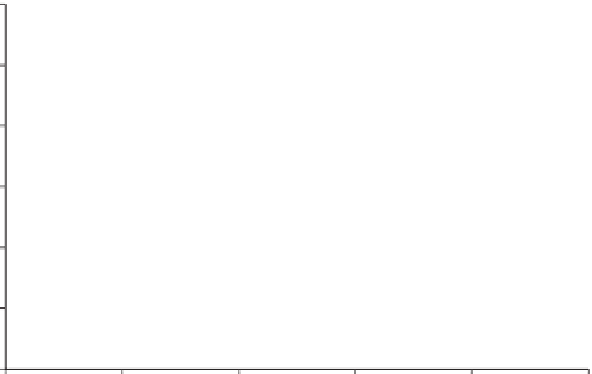Agriculture Reference
In-Depth Information
2300
2250
2200
2150
2100
2050
2000
0.8
0.9
1
1.1
1.2
Dietary ideal protein (relative)
Fig. 13.1.
Changes in food intake in response to dietary ideal protein content, relative to the Aviagen (2009)
recommendations, for Ross 308 broilers in two commercial broiler strains. (From Kemp
et al.
, 2005.)
time, the effect of different nutrient concen-
trations and energy-to-protein ratios on food
intake, carcass composition and protein gains,
the effects of differences between genotypes
in the amount of excess energy that may be
stored as body lipid, and the maximum rate
at which this can take place, and the con-
straints placed on birds by the environment
and by the feed which prevent them from
consuming the necessary amount of a feed
to grow at their potential. The above factors
deal with the interaction of the bird with its
environment, but equally important when
determining the optimum feeds and feeding
programme for a flock of broilers is the man-
ner in which the birds will be sold, whether
at the farm gate, processed or further pro-
cessed. This is perhaps the most neglected of
all criteria influencing the profitability of a
broiler enterprise, with far too much emphasis
conventionally being placed on the feed con-
version ratio and other non-economic criteria.
It is only through the development of a
plausible theory, and the advent of com-
puters, that it has become possible to inte-
grate all these factors into a workable form.
It is now possible to predict voluntary food
intake, and this has opened up a wealth of
opportunities that were not available previ-
ously to nutritionists, geneticists and produ-
cers wishing to make the broiler production
themselves, these experiments would have
to be repeated at regular intervals in order to
measure the changes in these interactions.
This should not be an excuse to conduct yet
more experiments: the purpose of experi-
ments should be to measure the numbers
that will make a theory work, to test a the-
ory or to allow us to choose between two
theories; that is, experiments should be con-
ducted only once a theory or a hypothesis
has been proposed.
When it comes to determining the opti-
mum amino acid contents in feeds used by
broilers, the general tendency of regarding
these 'requirements' as being fixed makes it
difficult to progress in this area. Fisher
et al
.
(1973) showed that there was an advantage
in seeing the requirements of animals as vari-
able, dependent on the marginal cost of the
amino acid and the marginal returns of the
product. The major reason for the apparent
reluctance to move from an outdated and
inaccurate system to a more dynamic one is
that there are so many factors that have to
be integrated before the optimum economic
feeding schedule can be determined. This is
especially true of feeding programmes for
growing animals. Factors to be considered
include the potential protein growth rate of
the genotype, differences between individ-
uals at a time and within individuals over













